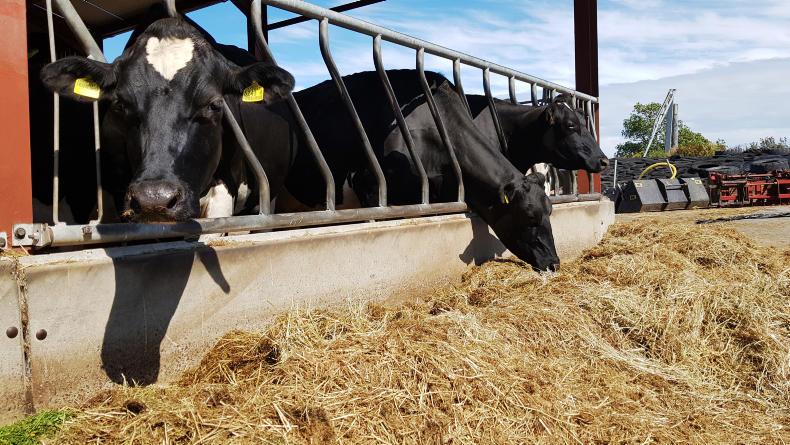Rainfall at the weekend was welcome on Bill Brown’s farm at the top of the Ards Peninsula in Co Down and has given a much-needed boost to grass growth.
Bill was able to reduce demand on the grazing platform during the drought by drying off some cows early. There are 60 dry cows in the house at present and they are being fed bought-in haylage. Holding concentrate levels at over 5kg/cow/day as the milking herd nears the end of lactation also reduced grazing demand on the farm.

Grass only started growing again after the weekend’s rain and measuring on Bill’s farm on Tuesday showed that average growth over the past week stood at 18kgDM/ha/day.
Second-cut silage on the Brown farm in mid-July was light, so Bill is now aiming for a bigger-than-planned third cut. Around 100ac have been closed up and will be let grow on for a bulky crop to be harvested in mid-September. Bill also purchased 15 acres of wholecrop silage this week.
Being able to reduce grazing demand meant Bill did not have to open first-cut during the drought so there is fodder in stock for the milking herd over the winter. Forage should be able to make up 70-80% of cows’ diets so an escalation in concentrate costs should not occur later in the year or next spring.
Phase one
Looking at the longer-term picture on the Brown farm as phase one of the Dairylink Ireland project concludes, the focus for Bill over the past three years has been on improving efficiency rather than output.
As Table 1 outlines, yield per cow has dropped back by around 5% over the past three years, but concentrate feed levels have reduced by 22% and milk from forage is up by almost a third. Bill has got more from grazed grass by developing laneways and a bridge over a waterway on the milking platform to improve access to paddocks.
Soil fertility has also improved significantly in the past three years, with 72% of the grazing platform now optimal for pH, phosphorus and potassium, compared to only 13% at the start of the project. This has allowed Bill to grow more grass, with 14.8tDM/ha grown on the milking platform last year.

Bill started weekly grass measuring and has been focused on pre- and post-grazing covers to improve the quality of grass going into cows’ diets.
More and better-quality grass going into cows has helped lift milk protein levels last year. Increasing fat and protein levels has been a priority with sire selection recently and the impact of this will be seen as these replacements enter the milking herd.
Herd fertility has been addressed by selecting sires with high breeding indexes for fertility and by reducing the calving spread from 24 weeks to less than 18 weeks. A tighter calving profile means cows that are slow to get back in-calf leave the herd and replacement heifers are a more uniform group.
Finances
Average milk price received on the Brown farm was 20.9p/l in 2015, 19.9p/l in 2016 and 26.8p/l last year. The increase in milk price in 2017 helped deliver improved margins, but as Table 2 shows, cost control measures put in place in 2016 allowed net cashflow (before drawings, tax and loan repayments) to increase even though milk price was lower.
An increase in farm working expenses last year occurred as capital investments made on the farm in 2017 were mostly funded from cashflow.
What are the three most important steps you have taken in the past three years?
What is your aim over the next three years?
There are other areas of the farm where efficiencies can be improved over the next three years, such as workload and time management. The aim is to streamline the workload to be able to spend more time off farm.
We are renovating calf accommodation at present to make calf rearing simpler in the autumn time. The tighter calving profile is also helping to make replacement heifer management easier as the group is more uniform.
The aim with the cows over the coming years is to hold yields at their current levels while continuing to increase milk components and improve herd fertility.
